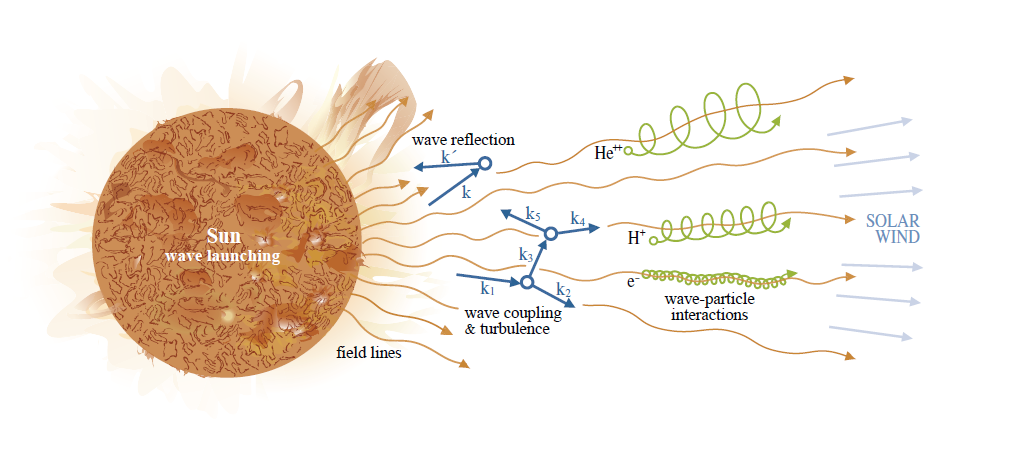Navin Kumar Dwivedi: The Phenomenon of Turbulence in Space Plasmas / A turbulencia jelensége az űrplazmában (kétnyelvű előadás)
 The vast majority of the visible Universe is in a plasma state, and one of the most widespread behaviors observed in such plasmas is turbulence – the transfer of energy across a broad range of scales that leads to complex chaotic motions, structure formation, and energy conversion. Not only is this turbulence a fascinating area of fundamental plasma physics, it is thought to be important in a variety of important open questions in space and astrophysics, such as the heating of the solar corona, generation of the solar wind, structure of the heliosphere, acceleration of energetic particles, disk physics, galaxy cluster heating, and space weather. As we all know that space weather is driven by the sun, which continuously changes its magnetic field. When this field accumulate excess energy, it can erupt and send energetic particles into space, sometimes towards Earth. We as a researcher believe that such violent emissions of charged particles, known as coronal mass ejections, are in part fueled by gusty space wind, or turbulence. We know the existence of space turbulence or plasma turbulence, but don’t understand its properties in totality until now. We need to understand that the space or plasma turbulence is not the same as what we experience in our daily life on Earth, like the sensation people experience when they are flying or sailing. Unlike wind gusts that create air and water turbulence on Earth, it turns out that space turbulence results from the interaction of plasma waves or wave particles interacting with each other. Turbulence acts to transfer energy from large-scale motion into small scale motion and heat. In ordinary fluids, this energy dissipation is caused by viscosity in the fluid. In collisionless plasmas, however, energy is dissipated by particles interacting with waves in the plasma. Understanding turbulence is important because it influences particle heating and acceleration, such as solar energetic particles and cosmic rays. It is also important because it heavily influences the structure and dynamics of the Earth’s magnetosphere as well as energy and mass inflow to the magnetosphere.
The vast majority of the visible Universe is in a plasma state, and one of the most widespread behaviors observed in such plasmas is turbulence – the transfer of energy across a broad range of scales that leads to complex chaotic motions, structure formation, and energy conversion. Not only is this turbulence a fascinating area of fundamental plasma physics, it is thought to be important in a variety of important open questions in space and astrophysics, such as the heating of the solar corona, generation of the solar wind, structure of the heliosphere, acceleration of energetic particles, disk physics, galaxy cluster heating, and space weather. As we all know that space weather is driven by the sun, which continuously changes its magnetic field. When this field accumulate excess energy, it can erupt and send energetic particles into space, sometimes towards Earth. We as a researcher believe that such violent emissions of charged particles, known as coronal mass ejections, are in part fueled by gusty space wind, or turbulence. We know the existence of space turbulence or plasma turbulence, but don’t understand its properties in totality until now. We need to understand that the space or plasma turbulence is not the same as what we experience in our daily life on Earth, like the sensation people experience when they are flying or sailing. Unlike wind gusts that create air and water turbulence on Earth, it turns out that space turbulence results from the interaction of plasma waves or wave particles interacting with each other. Turbulence acts to transfer energy from large-scale motion into small scale motion and heat. In ordinary fluids, this energy dissipation is caused by viscosity in the fluid. In collisionless plasmas, however, energy is dissipated by particles interacting with waves in the plasma. Understanding turbulence is important because it influences particle heating and acceleration, such as solar energetic particles and cosmic rays. It is also important because it heavily influences the structure and dynamics of the Earth’s magnetosphere as well as energy and mass inflow to the magnetosphere.




